Forums:
In the research for the second edition of my book, Rethinking Thermoelectric Effects In Seebeck And Peltier Elements: Toward A Unifying Paradigm, I extensively reviewed William Thomson’s Mathematical And Physical Papers, in addition to re-examining the conceptual frameworks and computer models I had developed for the first edition. It became readily apparent that Thomson had made serious misjudgments in proposing his “third effect”. His central assertion was that, “. . . electric currents must possess the previously-undiscovered property of producing different thermal effects in passing from cold to hot and from hot to cold in the same metal” (Vol II, p. 193). It is important here to carefully parse this statement. Thomson was not stating that changes in current polarity were triggering interactions of phenomena related to bulk properties. He believed that there was a property which was characteristic of electrical current, and it led to the production of thermal responses when current interacted with increasing or decreasing temperatures. Thomson concluded that this mechanism accounted for the difference in energy levels between like conductors when current ran from cold to hot versus hot to cold.
At that time, however, there was an alternative thesis already at hand and it is one supported by computer modeling today. It can be shown clearly that disparities in energy level and temperature—the kind observed by Thomson in his conductor experiments—can be easily explained in detail by the interactions of the four basic bulk properties (thermal conductivity, electrical resistivity, Seebeck Effect, and Peltier Effect), their temperature dependencies, the codependency of the thermal gradient, the reversibility of Peltier Effect with changes in current polarity, and the shift in direction of thermal conduction and Seebeck Effect polarity with respect to ΔT. Thomson was aware of all of these factors although thermal conduction defied mathematical analysis when he was contemplating his “third effect”. Still, he had adequate knowledge to formulate a conceptual framework based on the four bulk properties; his awareness is reflected in his writings. Computer modeling clearly shows that there is no need for any effect beyond the four bulk properties, there is no requirement for absorption or evolution of any extra threads of heat energy to produce the energy disparities. The only exceptions presented in matching the model to Thomson’s results, were in those cases where the outcomes were contrary to his expectations for certain metals. That type of scenario could not be reproduced because adequate bulk property data was not available for characterization over a wide temperature range; I also suspected that Thomson drove these materials into thermal overload (he did not report current levels, so it was impossible to discern).
It is critical to note that Thomson’s experiments only provided tentative verification that the disparities existed in conductors (when current flowed from cold to hot versus hot to cold)—they did not prove the existence of his proposed mechanism or provide evidence to choose among alternatives. Indeed, the computer model also shows that such disparities should exist, but it clearly demonstrates that there is no need for Thomson Effect—whether it is a property of current or some other mechanism. Thermal conduction, electrical conductivity, Seebeck Effect, and Peltier Effect—working together to develop a thermal gradient which can provide energy balance—will deliver the expected results.
Note that I did not start out with the intention of criticizing Thomson or his effect. The project began by examining how energy balance would play out along the length of TE elements for maximum harmony with the Laws of Thermodynamics. The desire was to go beyond system-level analysis with its reliance upon averages, approximations, and disregard for temperature dependencies. Comprehensive conceptual frameworks and computer models were developed for TE power generation and cooling which relied upon finite element analysis and convergence algorithms. Thomson Effect had to be reviewed along the way and serious issues were found in the path. Ignoring them was not a viable choice.
Michael Spry
(See details point-by-point argument below, "The Basic Case Against Thomson Effect")


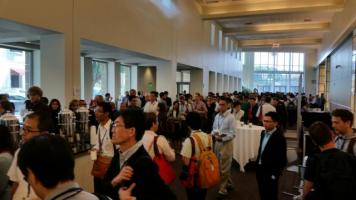
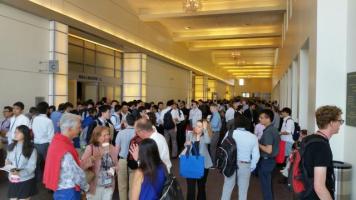













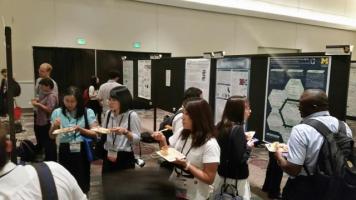
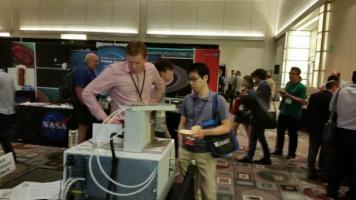








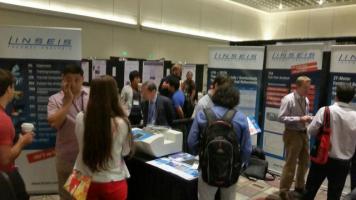



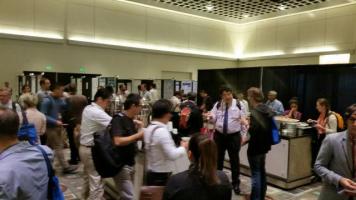





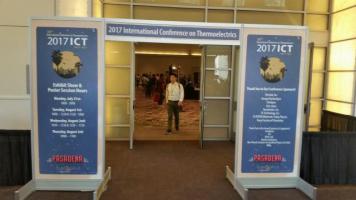







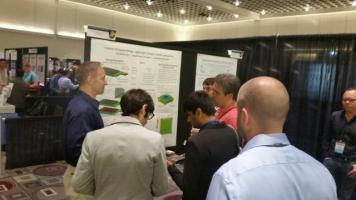









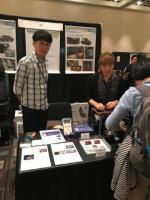



















































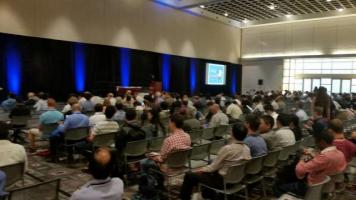







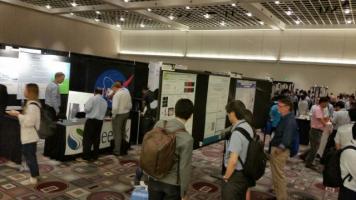

Computer Modeling in Thermoelectrics
Hi Michael,
I read your article with much interest.
Do you know if computer models have ever been used to simulate the thermoelectric behavior of inhomogeneous mixtures of dissimilar metals?
Best regards,
Keith P Walsh
Reply to Keith P Walsh
Hi Keith,
I'm glad you fond the posting of interest.
I do not know what sort of mixtures you are proposing. With a previous power generation algorithm, I have modeled elements composed of up to three layers of different TE materials along with interface materials such as connecting tabs, substrates, and gap fillers. I am hoping to incorporate my new algorithm into a similar program in the future. It is possible to add additional layers of TE material, as well, it just adds computing time. This could also be done with cooling elements, I just haven't gotten around to it and I'm not sure whether anyone else has. If you are talking about non-layered 'mixtures', I'm not sure what you might have in mind.
Be aware, too, that there are issues with the way data is gathered for temperature dependency and things aren't quite as apecific as they may appear on the surface. While modeling for temperature dependency is still useful for exploring the interaction of phenomena associated with bulk properties, the variability within a 'population' of material is seldom captured. Typically, few samples are examined. Furthermore, differences between the way data is tested and the way material is employed, can lead to errors in generalization. These matters are discussed in the book.
Michael Spry
Another thought on the inhomogenous mixtures
Keith,
If your interest in modeling "inhomogeneous mixtures of dissimilar metals" is a matter of "tiny particles of one material embedded in another", I am not aware of anyone who has done it--though it may well have been done. It is certainly a prospect which is approachable in one way or another, though it would add much complexity to the modeling environment and some corners might have to be cut. The temperature dependencies of each material would obviously have to be understood to an acceptable degree. Much of the challenge would be in coping with the geometry of the embedded particles and their position within the main conductor. The algorithms would have to manage the exceptional math when segments of the conductor hold particle material. This could get a bit tricky when the segmentation for finite element analysis is based upon holding fixed temperatures and determining the lengths of the segments based on the temperature dependencies of the bulk materials (that is far easier that holding fixed lengths and determining temperatures). A separate multidimensional array would be required to hold positional data on the other metals. It could get complicated depending on the number of particles.
There are more empirical ways to go about it--like testing an array of samples which show representative variability within the overall population--but that involves an enormous amount of sample testing. Either way, the embedded particles pose the potential for expanding variability from sample to sample, and computer modeling becomes more of a matter of scaling the population of conductors rather than just studying single elements. As a baseline, you would need good data on the variability of the conductor material without embedded material, to know how the particles truly effect the grand scheme of things. It would be a big project.
Michael Spry
The Thomson Effect?
Hi Michael,
Thank you for your replies, they are very much appreciated. I expect I'll have more questions on this topic in due course.
As a sideline, I was wondering whether in order to recognise William Thomson's contribution to our understanding of thermoelectric phenomena it might be necessary to consider that Thomas Seebeck and Jean Peltier only ever detected thermoelectric effects involving at least two dissimilar materials in contact with each other, and that the coefficients they derived for different materials were only ever relative thermoelectric coefficients measured with respect to a consistent reference material making up the other half of their bi-metallic circuits.
My 1952 copy of "Physics" by Starling and Woodall has this to say about Thomson:
"He suggested that there must be other electromotive forces in the circuit and that these exist in the metals themselves, acting between the parts of any one metal at different temperatures. This was found to be correct. Thus if two points in the metal differ in temperature by the amount dT, the electromotive force in this element of the metal is s.dT. The quantity s is called the Thomson coefficient. It is taken to be positive when directed from points of lower to points of higher temperature."
I think that because we now recognise that the material property "s" described above is so fundamental in providing the complete explanation for what was happening in Seebeck's bi-metallic circuits, it has now become the norm to call this property the "Seebeck coefficient" rather than the "Thomson coefficient".
Personally I think that it is of only secondary importance what we actually call the thermoelectric properties of materials, so long as everyone understands correctly what is meant. However, I do believe that in this case the modern convention for naming this basic thermoelectric property the "Seebeck coefficient" might be a little misleading with regard to just exactly who explained what, and when.
You carried out a thorough review of Thomson's work in thermoelectricity and found that:
" ... he had adequate knowledge to formulate a conceptual framework based on the four bulk properties"
I think it's possible that if you carried out a similar review of the work of Seebeck (and similarly Peltier) you may find that he did not, and this would perhaps provide supporting evidence for Starling and Woodall's assertion that it was in fact William Thomson who first deduced and described the basic thermoelectric property which is now commonly referred to as the "Seebeck coefficient".
I'd be interested to hear what you think.
Best regards,
Keith
Basics of the Thermoelectric Effect
Hi Michael,
I've uploaded details of an example of the type of mixture of metals that I was referring to in my original enquiry of 27 February to my website [Ref.1].
This information was sent to me by David B Mahler, Profesor Emeritus at Oregon Health & Science University, a little over eleven years ago.
I subsequently wrote to Professor Mahler asking if anything was known about the thermoelectric behavior of this material, but I never received a reply.
One of my favorite thermoelectric references is a paper by Johann H Hinken and Yury Tavrin titled, "Basics of the Thermoelectric Effect with Magnetic Readout" [2].
Figure 1d in this paper shows what happens when a volume of one conductive material is completely enclosed within a volume of another conductive material and subjected to a temperature gradient. As a result of the thermoelectric effect, thermoelectric eddy currents are induced around the enclosed conductor, and this in turn induces a magnetic field which can be detected outside the surface of the surrounding conductor.
This phenomenon is used in non-destructive testing to detect (usually unwanted) inclusions in engineering materials.
I feel certain that similar thermoelectric activity must occur in the material that Professor Mahler sent me details of, and I've been trying to find out if any electromagnetic effect can be detected at the surface of this material when it is subjected to a temperature gradient. However, it appears that no-one has ever carried out any experimental procedure which would demonstrate it one way or the other.
From the replies you have already written it sounds like it might be difficult to set up a computer model which would give an accurate simulation of the thermoelectric behavior of this material.
Do you know if anyone has ever attempted to do this, or anything similar?
I know that theoretical studies have been carried out on "nano-scale" materials under the direction of Mildred Dresselhaus at MIT [3], but the material inhomogeneity of Professor Mahler's material appears to be on a much bigger scale.
I'd be most grateful for any information that you can provide.
Best regards,
Keith
References:
[1] http://www.bookbootusers.co.uk/David_B_Mahler.pdf
[2] http://www.bookbootusers.co.uk/N6e.pdf
[3] http://newsoffice.mit.edu/2013/invisible-particles-could-enhance-thermoe...
By the way, I meant to put some reference dates on my previous posting.
Thomas Johann Seebeck (1770-1831)
Jean Charles Athanase Peltier (1785-1845)
William Thomson - 1st Baron Kelvin (1824-1907)
Thomson's work in thermoelectricity dates from the 1850s, which means of course that neither Seebeck nor Peltier could ever have known of it.
Another response to Keith
Keith,
This kind of scenario is very challenging to capture in a model. If the shape of the enclosed conductor was such that it could be captured in some type of mathematical representation or three-dimensional array, one had bulk property information on both materials, and there was a defined volume and current level for the main conductor, it should be possible to do an analysis with a custom computer model. If the conductors were doped-semiconductor material, the bulk property testing would have to be consistent with the orientation of the crystals for majority charge carrier flow.
I would go with finite element analysis dividing the overall volume into many segments and treating the enclosed material as though it is in parallel with the enveloping material. The more simple the shape of the enclosed material, the easier it would be to approach the problem. There might have to be some convergence algorithms to cope with the irregularities(?). Just like with parallel electrical circuits, one would come to terms with the parallel portion and use the knowledge to understand each ‘leg’. It might be possible to get relative indications of Seebeck voltage for the two materials in that area and resistance levels. A complex shape would really make matters difficult, however.
Of course, with the second material being entirely enclosed, depending on how you look at it, there is either one junction or an infinite number of them. Eddy currents are produced because there would be different Seebeck voltages developed across the entirety of the enclosed material with the same thermal gradient for both materials. The difference in voltages would cause current flow all around the frontier between the two materials. The potential differences would tend to resolve themselves locally.
If the shape of the enclosed material is at all complex, I think the most accurate assessments might well come out of an empirical approach, but as I’ve outlined, that takes a lot of sample testing. You would need some way to assess the distribution of the particles, too. As I often shared with my testing colleagues, “Nothing is easy.”
Michael Spry
Measurement of Thermoelectric Effects
Michael,
Thank you for your latest reply.
My understanding is that those eddy currents would induce associated magnetic effects which, if great enough, might be detected at the surface of the material.
Also, although local potential differences would be largely resolved by the circulation of local eddy current, one might expect that a temperature difference applied across the bulk material would still produce an overall thermoelectric potential which could also be detected.
I appreciate that the measurement of thermoelectric effects is not your own area of specialism, but can you suggest any particular reasons why the thermoelectric activity arising in a material such as the one described by Professor Mahler should prove difficult to measure?
Best regards,
Keith
Repsonse to Keith
Keith,
The key phrase is "great enough," especially if there is minimal dT across the material.
I don't see any big issues with measuring samples for bulk properties. The tough part is correlating the results with distributions of the non-homogenous materials which would be unknown.
Michael Spry
Thomson's Error
I was going through Thomson's papers again today while working on a journal article and found the precise point where he makes his error in theorizing about his current-dependent effect. It can be found in "On The Dynamical Theory Of Heat", Appendix Note I. (on page 319 of Volume I of the collected Mathematical and Physical Papers). It is there that he makes a logical error. He presents an argument which is based upon the existence of an energy disparity between the conditions where current flows from cold to hot versus hot to cold. He then leads up to the point where the logical conclusion is that such a disparity, in fact, exists under the circumstances. However, he goes beyond the scope of his argument to conclude that his proposed current-dependent effect has been validated. He is laboring under the presumption his proposed "third effect" is the only possible explanation for the energy disparities when there is an alternative thesis at hand (which should have been apparent to him and that can now be demonstrated to support the differences). His conclusion did not follow from the logic.
Michael Spry
The Basic Case Against Thomson Effect
Here is the basic criticism of Thomson's assertion of a "third effect":
Based on these considerations, it is quite clear that there are logical flaws in Thomson's arguments supporting the existence of his eponymous effect, though some of those flaws may have only become apparent in the light of later understanding. Thomson did, however, possess adequate knowledge to entertain the alternative thesis at a conceptual level, though a lack of mathematical understanding on thermal conduction would have prevented more detailed analysis.
Inasmuch as the energy differences can be easily explained and modeled using only the four basic bulk properties, and the actions of those properties meet Thomson's concerns about the properties of engines, it would appear that there is no need for the concept of Thomson Effect and that its existence has never been proven. Without clear indication of a distinct mechanism to support it—one that is clearly apart from the other bulk properties—I would say there is no reason to conclude that Thomson Effect exists.
Michael Spry
3/27/2015
Updated 10/27/2015
On the Question of Thomson's Contribution
Hi again Michael,
Did you find any evidence to suggest that the fundamental thermoelectric relation -dV=s.dT, where s is the absolute thermoelectric coefficient for a single homogeneous conductor, had been quoted by anyone prior to William Thomson?
Regards,
Keith
Reply to Keith
With all of my investigatory work on the Thomson Relations, I have finally found a few references where Thomson used equivalents to Peltier and Thomson coefficients in concept. I have yet to find any such treatments of Seebeck coefficent. He tends to deal with it as an electromotive force which he does not break down accept as he sees it relating to other bulk properties. Much of the detailed development, appears to come out of the thermodynamic community from 1931 onward, though Thomson's efforts were generally embraced. Thomson did recognize that Seebeck and Peltier Effects were relevant in individual conductors, but it's not like he made any big declarations about it. Of course, he helped establish thermodynamics. If Thomson Effect in non-existent, there needs to be a major review in thermodynamics. My work on longitudinal energy balance will also create problematic insights in that field.
The straight poop on Thomson Effect
After doing a great deal of additional research, I now recognize that the two threads of Thomson Effect derive from separate applications of Seebeck and Peltier coefficient that were not included within the original definitions of Seebeck and Peltier Effect. Thomson was trying to pick up these stray threads of heat transfer which he combined into a single quantity. What he should have done instead--in my opinion--is question the boundaries of the Seebeck and Peltier Effects--and expand them. When discussion is clustered around the separate application of the Seebeck and Peltier coefficients, it makes for a far more intuitive accounting of TE processes. This is all covered in my 2018 book, Reframing Thermoelectric Fundamentals Within A Temperature Dependent Context--a volume which thoroughly explores the mechanisms behind all of the bulk material properties. The book also covers the fundamental importance of temperature dependency in TE operation.
Regardless, Thomson coefficient is not a bridge between the Seebeck and Peltier coefficients; it is an utter contrivance which serves no useful purpose. It comes from the mathematics for the two threads of Thomson Effect. While both threads relate to the energy levels of flowing electrons, the dynamics of each thread are separate and opposing.
I also continue to question the validity of the Thomson Equivalency--π = αT. This appears to be a 20th Century artifact which was not derived by Thomson. The simplicity of this formulation is not matched by an equally elegant explanation which connects charge carrier diffusion to the TE energy levels of individual electrons--and absolute temperature of course. Something is missing in the accounting. The mathematical proofs which have been offered to date, tend to rest upon shaky or false assumptions (such as isothermal operation under current flow, or upshots of operation under "feeble" current levels). This is also discussed within the new book.